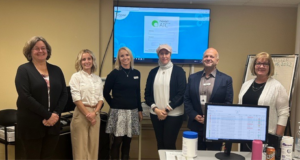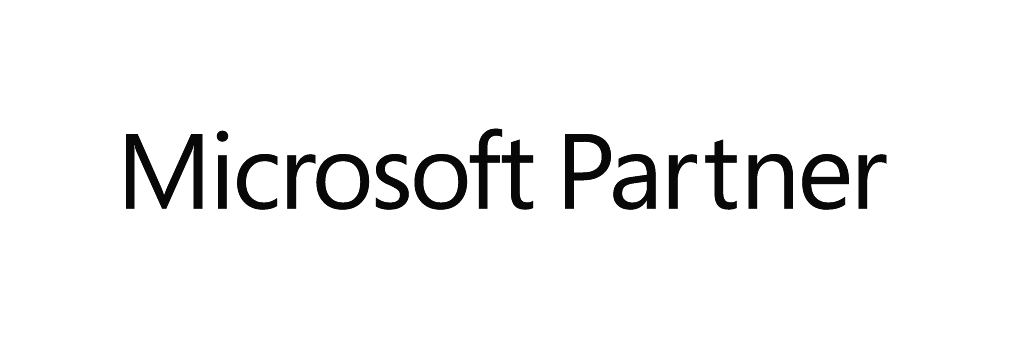This article was written by Abigail Cukier for the Ontario Medical Association. Published Fall 2023. To access the original article, click here.
Long Waits for Specialist Care Must End
OMA calls for centralized referral system to help patients and doctors
Almost anywhere you go – the bank, doughnut shop or airport security – you join a common queue that funnels into smaller lines to serve the next person. According to queuing theory, this is an efficient, fair way to deliver a service.
On the other hand, when you go to the grocery store or cross the border by car, you have to choose between several lines. There is no predictability in which line will move fastest. The latter scenario is how it works in most of Ontario health care.
Rather than going into a centralized referral system, most referrals for specialty health care or surgery are sent by a primary care physician to a specific specialist or surgeon – and the referring doctor usually has no idea whether that specialist has a short or long waiting list.
“It’s a source of immense frustration to family physicians, as we know it is for our specialist colleagues. This is not about anybody not doing a good job. It’s about a system that is not set up rationally” – Dr. Danielle Martin
“For family doctors in Ontario, referrals are one of the biggest pain points,” said Dr. Danielle Martin, a family physician and chair of the Department of Family and Community Medicine at the University of Toronto. “We have no way of knowing how long wait times are for a given issue or specialty. We spend a lot of time spinning our wheels, trying to figure out how to access the specialist who has a reasonable wait time for a specific problem.”
There are other issues, Dr. Martin said. Often, after sending a referral, a physician discovers that he or she didn’t fill in the right form the information is considered incomplete or that the specialist has retired or doesn’t treat this problem.
“It’s a source of immense frustration to family physicians, as we know it is for our specialist colleagues,” she said. “This is not about anybody not doing a good job. It’s about a system that is not set up rationally.”
Dr. Danielle Martin is a family physician and chair of the Department of Family and Community Medicine at the University of Toronto.
Addressing unnecessary administrative work
This is why the Ontario Medical Association has identified building a centralized intake and referral system as one solution to addressing the growing burden of unnecessary administrative work for doctors. This administrative burden – and the physician burnout it contributes to – is one of the three top priority areas outlined in the OMA’s new report, Prescription for Ontario: Doctors’ Solutions for Immediate Action.
In the Solutions Report, the OMA states: “To ensure equitable and timely access, a centralized intake and referral system should be managed by Ontario Health and implemented in collaboration with the OMA, Ontario Health Teams, hospitals, community-based surgery and diagnostic clinics, and primary care practices. It must be created with strong physician involvement to help build a solution that works for patients and physicians.”
The OMA says a centralized referral system could reduce wait times by maximizing efficiency and capacity of all specialists while benefiting primary care providers and patients.
Dr. Martin said the traditional system erodes the patient-physician relationship. “The system is totally opaque. We don’t know who sees what problems or how long their wait time is or what their process is for triaging a referral.”
As a result, family doctors can’t effectively communicate what is going on to their patients, she said, adding that managing expectations is one of a family physician’s most important functions. “Not being able to answer those basic questions isn’t just frustrating for us, it’s frustrating for our patients and it undermines our patients’ faith in us and in the health-care system.”
Meanwhile, specialists often receive referrals for care they do not provide or with insufficient information, which may sometimes not be enough to triage referrals. “There is also the stress of managing my own independent pool of patients,” said Dr. David Urbach, head of the Department of Surgery at Women’s College Hospital in Toronto.
“If I’m a surgeon who does not have as much access to operating room time or other facilities for the number of patients I have waiting, that is stressful. I’ve made a commitment and they’ve put their trust in me and I can’t provide surgery in time.”
In the traditional model, there is no easy way to move one surgeon’s patients to others who have more capacity, he added.
There are a few centralized referral systems in Ontario now but they are not provincewide – as the OMA recommends – and they don’t cover all specialties.
Physicians champion a centralized referral system
In 2015, a group of physicians who were frustrated with the referral process championed an initiative to create a centralized e-referral program. After working with system leaders to form a diverse group of stakeholders, including patients and clinicians, an e-referral system was procured that was meant to expand throughout the province. The system was thoroughly tested, and then it expanded to regions throughout the province, receiving referrals from more than 9,400 physicians and nurse practitioners. Referrals are sent to various specialties either directly or through a central intake. In one region this includes diabetes management, orthopedic surgery, and cataract surgery all through one central hub. Primary care physicians use a standard form launched from a patient’s electronic medical record to indicate whether their patient wants to see a preferred doctor, stay in a certain region or go with the shortest wait time.
Dr. Mohamed Alarakhia, a family physician in Waterloo, was part of the original group of physicians who developed the system. He is now CEO of the Kitchener-based non-profit eHealth Centre for Excellence, which is in partnership with the Ottawa-based Ontario eConsult Centre of Excellence. Both are funded by Ontario Health.
He said the centralized e-referral system has reduced wait times for cataract surgery from 351 days to 298 days, allowing patients to be seen 53 days faster. Similarly, wait times for orthopedic surgery were reduced by 54 days and wait times for an MRI have decreased by 31 days, aided by a digital decision support tool, which helps referring physicians decide if an MRI is needed.
“If I have an elderly patient who has knee pain, they likely have osteoarthritis and they don’t need an MRI,” Dr. Alarakhia said. “If I refer them with the electronic referral system for an MRI, it will suggest doing an X-ray instead.”
“By implementing decision support, we were able to reduce MRIs by 12 per cent. That will save the government $13 million a year and importantly, reduce the number of people in the queue, so those people who actually need an MRI will be able to get one.”
“Anywhere in Ontario, a physician should be able to refer a patient into a central hub. We have the building blocks for this, but we need a strong push to make this available across the province by scaling and expanding what is already working” – Dr. Mohamed Alarakhia
fall23-centralized referral-alarakhia.jpgE-referral is also being combined with e-consult, through the partnership with the Ottawa centre. If a primary care physician sends a referral to a specialist, the specialist can respond with medical advice. This enables the primary care physician to give the patient needed advice or treatment without them having to be referred. “Where clinicians have sent an initial e-consult, about 72 per cent of referrals are avoided,” Dr. Alarakhia said. The referral approach also keeps patients in the loop. In the traditional model, patients have no idea when the referral was sent or its status, Dr. Alarakhia said.
“Patients are suffering on waiting lists and it’s not acceptable in our system for that to continue to get worse.”
With this centralized e-referral process, patients receive notifications throughout the process, including when the referral has been sent and when the appointment is made. Patients can confirm online and receive a reminder before their appointment. Physicians also receive these status updates to the patient’s EMR.
Dr. Mohamed Alarakhia is a family physician in Waterloo and CEO of the Kitchener-based non-profit eHealth Centre for Excellence.
While the e-referral system has expanded across the province, more specialist services need to be included and made part of the system.
Need to expand provincewide
Dr. Alarakhia said it is important to develop a system that is consistent across the province. “Anywhere in Ontario, a physician should be able to refer a patient to a central hub. We have the building blocks for this, but we need a strong push to make this available across the province by scaling and expanding what is already working.”
There are other examples of centralized e-referral in the province. Dr. Urbach, from Women’s College Hospital, works in both the traditional and centralized referral models. He is part of the Ontario Bariatric Network, through which patients undergoing insured weight loss surgery go through a central portal, where their referral is assessed and parcelled out to a regional centre.
“This leads to a system where there is not huge variation in wait times from centre to centre or surgeon to surgeon,” Dr. Urbach said. “It’s highly predictable and it’s highly uniform and it is the shortest wait possible for all patients.”
Ontario also has publicly funded rapid access centres for hip and knee arthritis and certain types of low back pain. Patients are referred through a central system, and then assessed by a health-care provider, such as an advanced practice physiotherapist or chiropractor. Surgeons only see patients who truly need surgery. Patients who don’t require surgery are referred to other management programs.
“This (the Ontario Bariatric Network) leads to a system where there is not huge variation in wait times from centre to centre or surgeon to surgeon. It’s highly predictable and it’s highly uniform and it is the shortest wait possible for all patients” – Dr. David Urbach
Some hospital systems also have their own centralized referral systems for surgical or specialty care. One example is Michael Garron Hospital in Toronto, which uses a central system for its fracture clinic, and breast, thyroid and thoracic diagnostic assessment clinics.
The OMA’s Solutions Report is advocating for a centralized referral system that is available across the province and developed based on lessons learned from existing systems and technology. The system must also preserve patient choice and maintain capacity for specialists who provide targeted care to specific populations.
Dr. Martin believes implementation of a provincewide centralized referral system requires two major components: infrastructure and culture change.
“When it comes to culture change, we need to figure out what it would take for such a system to be considered acceptable to all family doctors, to all specialists and to the public. And that’s going to involve championing and giving examples of successful models,” she said.
“This is why it’s important that the OMA wants to champion this. Because I do think that from within the profession, we need to move away from the notion of a specialist referral as a personal introduction and move towards the notion of a pool of specialists as a shared resource.”
Dr. Urbach said physicians are creatures of habit and can be resistant to changing models of care. “As physician leaders, we can be persuasive and emphasize the benefits and do small demonstration projects,” he suggested.
Dr. Martin believes wait times could be substantially reduced even with the current number of doctors and other resources such as non-physician staff and hospitals, if it is done thoughtfully.
“The current system actually is not a system at all. I don’t think that we’ve selected the current system because anybody thinks it’s a good idea.”
She said while patients are frustrated with wait times for specialist care, the system is also driving physician burnout.
Dr. David Urbach is head of the Department of Surgery at Women’s College Hospital in Toronto.
“For family doctors, administrative work that has no clinical value to our patients is increasing exponentially. It’s burnout for specialists as well, who are receiving referrals from all over the place and sometimes without the information they need to do their job. Knowing they are booking 18 months out, must be a terrible feeling. Nobody is winning in this current environment, not family doctors, not specialists and not patients. And that’s why it’s a critical issue.”



